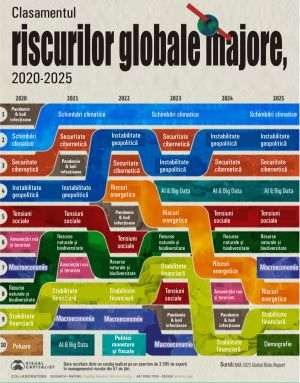
"The Sermon on the Mount" is the most studied text in the New Testament, considered by Christian exegesis to be essential to Christianity.
Although it seems an obvious meaning, exegesis overlooks the fact that Jesus here refers directly and personally to Hillel and his nephew, Hillel Gamaliel.
Verse 19 clearly refers to those who have made changes to God's Commandments, providing a composite portrait of Hillel and his successors, because:
on the one hand, tradition attributes to Hillel the promulgation of the Prosbul, which indefinitely suspends the Commandment of debt forgiveness that should have been applied every seventh year, and the complex of related Commandments that make up the Shmita (forgiveness, which, as Scripture specifies, is not granted by any man, but directly by God, regardless of the will of the creditors - that is to say, it could be said that it is a law that organizes a certain socio-economic system);
on the other hand, this is the only case of a rabbinic rule (takkana) that suspends a functional divine Commandment (mitzvah), which thus flagrantly exceeds the competence invested in the religious authority (5);
the uniqueness of the case removes any doubt about the reference to this part of the "Sermon on the Mount" - Jesus speaks unequivocally about Hillel.
The overt character of the reference to Hillel/Hillelites is supported by two further clues regarding the authority of those disavowed by Jesus Christ:
Not everyone could authoritatively suspend the application of a mitzvah, but only the collective body of the Sanhedrin, which at the time of the promulgation of the Prosbul was led by Hillel; it would have made no sense for Jesus to refer to someone else who would not have had the authority to suspend a halachic rule.
After Hillel's death, the Nasi function seems to have been taken over by his son, Simeon ben Hillel, and later by the son of Simeon, Hillel Gamaliel (6), these being only the first three generations of Hillelites out of the fifteen who succeeded in leading the Sanhedrin; the authoritative line of interpretation of the Law was Hillelian and was victorious despite any opposition.
For the "Hillelian dynasty," it seems that the crucifixion of Jesus was only a temporary solution to a problem, and it is plausible that the Hillelians may have taken ownership of the religious movement triggered by it later on.
Not everyone had the authority to "teach people," but only the Sanhedrin as a collective body, represented by the Hillelians for over four hundred years. It would have been pointless for Jesus to refer to someone else who did not have the authority to establish the interpretation of the Law.
From the first texts to its editing in the early third century by Rabbi Judah ha-Nasi (a descendant of Hillel), the compilation of the Mishnah was guarded by the Hillelians as Nasi.
Once again, in verse 20, Jesus specifies that entry into the Kingdom of Heaven is conditioned by a deeper knowledge, superior to that of the scribes (teachers of the law) and the Pharisees (a sect whose defining feature was strict adherence to the Law). Thus, Jesus repudiates the interpretive authority of the Sanhedrin, which was made up of members of these categories (alongside priests).
From this fragment of the "Sermon on the Mount," it appears that Jesus openly disapproved of the practice of Prosbul, instituted by Hillel several decades earlier and continuously supported by his successors, who came generation after generation to lead the Sanhedrin. Rejecting Prosbul was risky, provoking enmity from the local elite both doctrinally and, above all, economically. It also attracted the hostility of the Roman occupier because Prosbul was the joint that financially connected the Roman and Israeli economies - two worlds governed by vastly different legal codes, so much so that they could be considered opposing.
If the literary character of Jesus were based on a historical personality, if 33 CE were the historical year of Jesus' crucifixion (as biblical historians claim), and if the account of the "Sermon on the Mount" in the Gospel of Matthew took this fragment from a real speech, then Jesus' rejection of Prosbul as a lending practice took place in the historical year of the credit crisis that erupted in Rome (7), which reverberated throughout the territories of the Roman Empire, even to the periphery (see Annex 2).
In case all these were real, and the chronology was concordant, then the Gospel of Matthew might be relating a fragment of a political discourse with a hot topic at that moment of the debt crisis, in which Jesus advocated for the restoration of the Shmita (God's law of debt forgiveness in the Sabbatical Year), suspended by the Prosbul promulgated by Hillel.
But the idea of forgiving debts was viewed with hostility in ancient Rome: faced with the promise of debt cancellation - tabulae novae - made by Catiline (7) during the financial crisis of 64-62 BC, Cicero argued that "the foundation of justice is good faith [n.n. - fides], that is, fidelity and truthfulness in what is said and agreed upon" (8).
Fides, as the goddess of good faith in Roman mythology, patronized loyalty to agreements and contracts, even in contradiction (every seven years) with the forgiveness of debts through the Shmita imposed by God: "...the Roman government was very hostile to debt cancellation between individuals, but sometimes cancelled tax arrears," writes Jean Andreau (9).
Fides defends the political and economic hierarchy - they are interdependent in the state organization system of the Roman Empire - including against those who are governed.
In contrast, divine Shmita results in the alleviation of wealth disparities, cohesion, and the reduction of social tensions, premises for a harmonious society with potential for spiritual elevation.
Notes
(5) In accordance with Halacha (the body of Jewish religious laws), the application of a mitzvah can be suspended in extreme cases, for the sake of saving human lives (which is not the case with Prosbul).
A valid example is provided by tradition, even in the case of Hillel:
"While studying with Shemaiah and Avtalion, Hillel lived in difficult circumstances and earned his living through hard work. In total, he earned only a small coin a day, of which half he spent on himself and his household, and the other half he gave to the gatekeeper of the academy. But one day he did not earn any money. Neither he nor his family ate that day, but being eager to hear the discourse of Shemaiah and Avtalion and not having money to pay the gatekeeper, Hillel climbed onto the roof of the academy and lay next to the chimney, where he could hear the discussion from inside. He lay there all night. This was in the month of Tebet in the middle of winter, and it snowed all night, covering his whole body to a great height.
The next morning, the academy seemed darker than usual. The sky was covered with snow, but when people looked closer, they saw a body under the snow. They immediately climbed up and removed the snow and recognized the man as Hillel. They washed him and anointed his body with oil and warmed him by the fire. Although such work is prohibited on the Sabbath, the scholars declared that a man like Hillel deserved the Sabbath to be desecrated for his sake." [s.n.]
("The Jewish Spiritual Heroes"/Volume I/The Creators of the Mishna, Hillel/Gershom Bader/New York, N.Y./1940)
(6) "Rabban Gamliel the Elder received the tradition from Rabban Shimon, his father, the son of Hillel the Elder." (Mishneh Torah, Transmission of the Oral Law:11/Trans. by Eliyahu Touger, Moznaim Publishing)
Some Christian scholars identify Rabban Shimon ben Hillel with Simeon, who is mentioned in the Gospel of Luke as having blessed the infant Jesus at the Temple:
"25. And behold, there was a man in Jerusalem whose name was Simeon, and this man was just and devout, waiting for the consolation of Israel, and the Holy Spirit was upon him.
26. And it had been revealed to him by the Holy Spirit that he would not see death before he had seen the Lord's Christ.
And he came in the Spirit into the temple, and when the parents brought in the child Jesus, to do for him according to the custom of the law,
He took him up in his arms and blessed God and said,
Lord, now lettest thou thy servant depart in peace, according to thy word;
For mine eyes have seen thy salvation,
Which thou hast prepared before the face of all people;
A light to lighten the Gentiles, and the glory of thy people Israel." (Gospel of Luke; 2)
As scholars have pointed out, the identification of Shimon ben Hillel with Simeon is not based on sufficient evidence; instead, the propagation of this idea without documentary support is illustrative of the diligent efforts to find connections between Jesus and the Hillelites in order to disguise the antithesis between them, the culmination of which was the crucifixion.
(7) "The financial crisis of 33 AD also illustrates how integrated all parts of the Roman Empire were, as it involved not only Rome but also Egypt, Greece, and France." - "Tiberius Used Quantitative Easing To Solve The Financial Crisis Of 33 AD"/Bryan Taylor/Global Financial Data (https://www.businessinsider.com/qe-in-the-financial-crisis-of-33-ad-2013-10)
(8) "Less than two decades after Sulla, Catiline [n.n. - circa 108-62 BCE], the infamous radical populist and enemy of Cicero, campaigned for consul on a platform of total debt forgiveness. He was somehow defeated, likely with the bankers and Romans who actually paid their debts opposing his candidacy. His life ended shortly thereafter in a failed coup attempt."
("The Slow-Motion Financial Suicide of the Roman Empire/The Bailout State Is as Old as Rome"/Monday, August 17, 2015/Lawrence W. Reed and Marc Hyden)
https://fee.org/articles/the-slow-motion-financial-suicide-of-the-roman-empire/
(9) "On Duties"/23/M.Tullius Cicero/With An English Translation. Walter Miller. Cambridge. Harvard University Press; Cambridge, Mass., London, England. 1913.
(10) "Personal Indebtedness and Debt Forgiveness in the Roman Empire"/Jean Andreau/2012
https://www.cadtm.org/Personal-endebtment-and-debt
Appendix 3
The mechanism of the crisis is described by the ancient Roman historian Publius Cornelius Tacitus, simply Tacitus (circa 56 - 120 CE), in "Annals"/6.16-17:
"Meanwhile a powerful body of prosecutors attacked with indiscriminate fury the class which had systematically increased its wealth by usury, defying a law passed by the dictator Julius Caesar which had defined the conditions of lending money and of holding property in Italy, a law long obsolete because the public good had been sacrificed to private interest. The curse of usury is, indeed, of ancient date in Rome, and it is the most frequent cause of sedition and discord, and consequently has been repressed in the earliest times of a less corrupt morality. In the first place, the Twelve Tables forbade any one to exact more than ten per cent [interest], when formerly the rate had been dependent on the caprice of the wealthy. Afterwards by a tribunician law the interest was reduced to half that amount, and finally compound interest was wholly forbidden. Moreover, it was checked by repeated acts of the people on evasions which, though continually blocked, still by strange devices reappeared. On this occasion, however, Gracchus, the praetor, in whose jurisdiction the inquiry fell, was compelled by the number of persons in danger to refer the matter to the Senate. In their distress the senators, none of whom was exempt from a similar guilt, threw themselves on the emperor's indulgence. He gave way and granted them a delay of a year and six months, in which each man was to adjust his private accounts according to the requirements of the law."
Following this, there was a shortage of money, a major shock to the entire credit and current currency, as a result of the condemnation of so many individuals and the sale of their property, the proceeds of which were absorbed into the imperial treasury or public treasury. To achieve this, the Senate ordered that each creditor have two-thirds of their guaranteed capital on estates in Italy. However, creditors sued [debtors for] full payment and it was not respectable for those who were sued to break their word. So, at first, there were noisy meetings and unpleasant requests; then noisy demands in the praetor's court. And the very device intended as a remedy, the sale and purchase of estates, proved the opposite, as the usurers had gathered all their money to buy land. The sales facilities were followed by a drop in prices and the more indebted a person was, the more reluctant they were to part with their property, and many were completely destroyed. The destruction of private property precipitated a decline in rank and reputation, until finally the emperor intervened, distributing one hundred million sesterces to the banks and allowing the freedom to borrow without interest for three years, provided that the borrower offered state guarantees on land worth double. Credit was thus restored, and private creditors were gradually found. The purchase of estates was not even carried out according to the decree of the Senate, the rigor at the beginning, as usual in such matters, eventually becoming negligence."
("The Complete Works of Tacitus" / Church Alfred John. William Jackson Brodribb. Sara Bryant. edited for Perseus / New York: Random House, Inc. Random House, Inc./reprinted in 1942)
Bibliography
"The Jewish Encyclopedia," second edition, available online;
"The Encyclopaedia Britannica," available online;
"The Life and Teachings of Hillel" / Copyright © 1994 by Yitzhak Buxbaum / First Roman & Littlefield edition 2004. First Rowman & Littlefield paperback edition 2008;
"Commentary on the Torah" / Ramban (Nachmanides) / Translated and annotated by Charles B. Chavel / New York / Shilo Pub. House / 1971-1976 / Source: nli.org.il/Digitization: Sefaria;
"The Jewish Spiritual Heroes" / Gershom Bader / New York, N.Y. / 1940
Disclaimer:
This essay proposes an interpretation that does not exclude the established ones, but only adds to them; the critique it develops on some religious texts is nothing more than the critique of texts; readers are warned that the author of the essay did not intend to undermine faith and that he is aware that this would not be a useful or achievable objective.














































